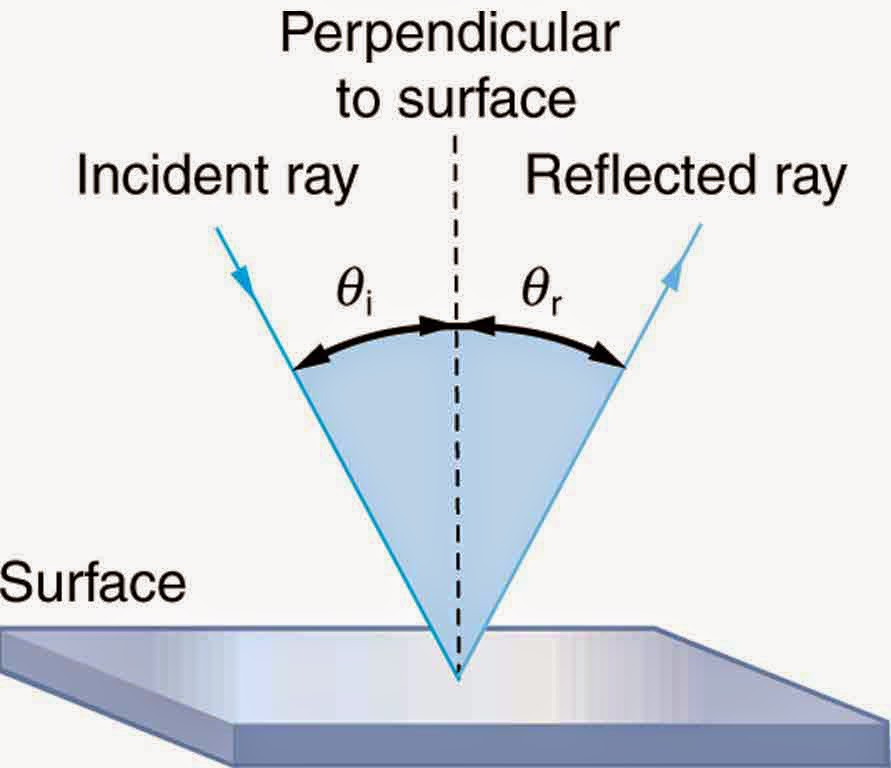The Law of Reflection
Light is known to behave in a very predictable manner. If a ray of light could be observed approaching and reflecting off of a flat mirror, then the behavior of the light as it reflects would follow a predictable law known as the law of reflection. The diagram below illustrates the law of reflection.
When a ray of light strikes a plane mirror, the light ray reflects off the mirror. Reflection involves a change in direction of the light ray. The convention used to express the direction of a light ray is to indicate the angle which the light ray makes with a normal line drawn to the surface of the mirror. The angle of incidence is the angle between this normal line and the incident ray; the angle of reflection is the angle between this normal line and the reflected ray. According to the law of reflection, the angle of incidence equals the angle of reflection. These concepts are illustrated in the animation below.
The law of reflection tells us that light reflects from objects in a very predictable manner. So the question is, why do we see objects like a table or a chair? These objects do not produce their own light, so in order for us to see any object, light must strike the object and reflect from the object into our eyes. More specifically, in order for us to be able to see objects, the light reflecting off an object must make its way directly to our eyes. So how does the light get from the object to our eyes? It does so through one of the two types of reflection: specular and diffuse reflection.

40/40 for this work!!!
ReplyDelete